Приложение
How to install the app on iOS
Follow along with the video below to see how to install our site as a web app on your home screen.
Примечание: This feature may not be available in some browsers.
-
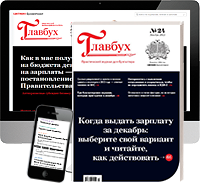
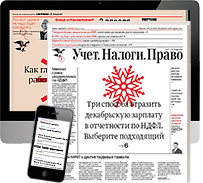

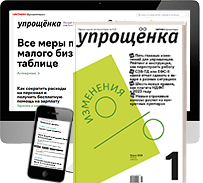
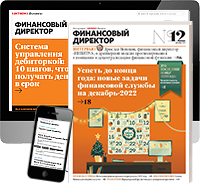
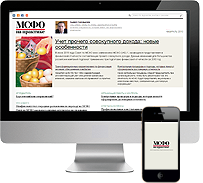
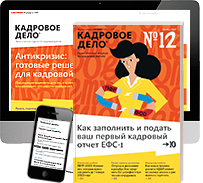
Любые журналы Актион-МЦФЭР регулярно !!! Пишите https://www.nado.ws/conversations/add?to=pantera или на электронный адрес pantera@nado.ws
Вы используете устаревший браузер. Этот и другие сайты могут отображаться в нём некорректно.
Вам необходимо обновить браузер или попробовать использовать другой.
Вам необходимо обновить браузер или попробовать использовать другой.
Collection Download Ebooks Best Seller Updated Daily
- Автор темы booksz
- Дата начала

Silicon-Plasmonic Photodetectors for High-Speed Signal Processing
Sascha Johannes Mühlbrandt
English | 2025 | ISBN: 9783731513674 | 204 Pages | True PDF | 5.7 MB
This book introduces and experimentally demonstrates a novel approach to exploit internal photoemission (IPE) for photodetection in silicon. The resulting device represents the first IPE-based detector that operates at technically viable performance figures. It combines a compact footprint and a high bandwidth with monolithic cointegration in silicon photonic circuits. The new concept opens an attractive route for optoelectronic generation and detection of waveforms in the sub-THz and THz range.
Код:
Rapidgator
https://rg.to/file/acdaefb28f1beb48dd703f32a7292b02/zzufu.7z.html
[b]Fileaxa[/b]
https://fileaxa.com/b1qim5ti7xdj/zzufu.7z
Fikper
https://fikper.com/Hkx3JDJGov/zzufu.7z.html
Six Minutes to Winter: Nuclear War and How to Avoid It by Mark Lynas
English | May 8th, 2025 | ISBN: 1399410512 | 304 pages | True EPUB | 0.57 MB
The world is currently closer to superpower conflict than at any time since the 1962 Cuban Missile Crisis. World War III is a real possibility, and with 12,000 warheads in the arsenals of more than half a dozen countries, we are standing on a nuclear knife edge.
We are sleepwalking to Armageddon. There are no mass marches, no COPs, no nuclear Greta. But the climate experience teaches us that ignoring a problem is no solution, and that a worldwide mobilisation can work. Six Minutes to Winter presents an unflinching view of the nuclear nightmare, but also describes how weapons can be taken off hair-trigger alert and ultimately abolished altogether. If human civilisation is to survive long term, we have no alternative.
Код:
Rapidgator
https://rg.to/file/a8753070fd257a37848ea9a23e00e18b/407el.7z.html
[b]Fileaxa[/b]
https://fileaxa.com/1szzav7qia3g/407el.7z
Fikper
https://fikper.com/ZH3ZtfHlBa/407el.7z.html
Slavery in the Cultural Imagination: Debates, Silences and Dissent in the Neerlandophone Space
by Marrigje Paijmans, Karwan Fatah-Black
English | 2025 | ISBN: 9463728791 | 374 Pages | True PDF | 4.4 MB
With the rising tide of scholarly and societal interest in the history and legacy of colonialism and slavery, this collection offers a much needed diachronic analysis of the cultural representations of the lives and afterlives of those subjected to slavery and indenture. It focuses on the history of the 'neerlandophone' space, defined as the complex linguistic space spanning former Dutch colonies. This collection gives a longue durée overview, with cases encompassing the period from the early modern period to the present-day, revealing the deep roots of the colonial 'cultural archive'.
A wide variety of scholars demonstrate how attention to the layered and polyphonic qualities of narratives can reveal silent and disruptive voices in colonial discourse, as well as collective emotions and imaginations that have hitherto remained unrecorded in most historical sources. They discuss different aesthetic, poetical, and storytelling practices, including literature, photography, performance, philosophy, and other forms of knowledge production that were formed both in the metropolis and by enslaved and indentured peoples in the colonies.
Код:
Rapidgator
https://rg.to/file/8a30e33bc156596552ca85d886ca621a/8iwj8.7z.html
[b]Fileaxa[/b]
https://fileaxa.com/ri44oqhflc60/8iwj8.7z
Fikper
https://fikper.com/X4PORbKcTo/8iwj8.7z.html
Louis D. Rubin Jr., "Small Craft Advisory: A Book About the Building of a Boat"
English | 1994 | ISBN: 0871135337 | EPUB | pages: 394 | 1.9 mb
Small Craft Advisory is an enchanting book about Louis Rubin's obsession with boats and his years of often hilarious boating adventures.
When Louis Rubin was thirteen, he built a leaky little boat and paddled it out to the edge of the ship channel in Charleston, South Carolina, where he felt the inexorable pull of the water. Fifty years and dozens of boats later-sailboats, powerboats, inboards and outboards-the pull is as strong as ever.
In the tradition established by Mark Twain, Joseph Conrad, and Herman Melville, distinguished author and scholar Louis Rubin explores man's longtime passion for boats. He examines the compulsion that has prompted him and hundreds of thousands of other non-nautical persons to spend so much time, and no small portion of their incomes, on watercraft that they can use only infrequently.
As his new boat (a cabin cruiser made of wood on a workboat hull) is being built, Rubin tells of his past boats and numerous boating disasters and draws a poignant comparison between his two passions: watercraft and the craft of writing.
Anyone who has ever bought and owned a boat-or wondered why people are obsessed by them-will love this amusing, evocative, beautifully crafted memoir by an inveterate boat-owner.
Код:
Rapidgator
https://rg.to/file/913422c3066cd78ecc2d061c1f447d99/yblx5.7z.html
[b]Fileaxa[/b]
https://fileaxa.com/zdxgphlqb169/yblx5.7z
Fikper
https://fikper.com/OmGwPioFbT/yblx5.7z.html
Smart Cities: Foundations and Perspectives
by Pier Luigi Mazzeo, Paolo Spagnolo
English | 2024 | ISBN: 0850143934 | 175 Pages | True PDF | 4.3 MB
In a rapidly urbanizing world, the concept of "smart cities" represents the future of urban living. These cities aim to harness advanced technologies to create environments that are efficient, sustainable, and responsive to the needs of their inhabitants. But what does it take to build a smart city? And what challenges must be overcome to realize this vision? Smart Cities - Foundations and Perspectives is a comprehensive guide that explores the intricate process of developing smart cities. The book is organized into two key sections. The first section, "Smart Cities Opportunities and Challenges", takes you through the initial stages of smart city development, with a focus on real-world examples like Saudi Arabia's ambitious smart city projects. It discusses the critical areas of energy, mobility, and waste management, offering a clear view of the evolution of these cities and the hurdles they face. In the second section, "Smart Cities Technologies", the book delves into the technological backbone of smart cities. From the Internet of Things (IoT) to renewable energy solutions and cybersecurity measures, it covers the cutting-edge innovations that are essential for creating intelligent urban environments. Written by leading experts in the field, this book provides invaluable insights for policymakers, urban planners, technologists, and anyone interested in the future of cities. Smart Cities - Foundations and Perspectives is not just a blueprint for building smart cities-it is a call to action for creating urban spaces that are secure, sustainable, and inclusive.
Код:
Rapidgator
https://rg.to/file/37267f614d12ba6200c0914641dde015/mtmoa.7z.html
[b]Fileaxa[/b]
https://fileaxa.com/xuupal0x812g/mtmoa.7z
Fikper
https://fikper.com/iFko4YB3hD/mtmoa.7z.html
So Very Small: How Humans Discovered the Microcosmos, Defeated Germs-and May Still Lose the War Against Infectious Disease by Thomas Levenson
English | April 29th, 2025 | ISBN: 0593242734 | 448 pages | True EPUB | 43.12 MB
The centuries-long quest to discover the critical role of germs in disease reveals as much about human reasoning-and the pitfalls of ego-as it does about microbes.
"Essential reading . . . Thomas Levenson brings to brilliant life the social history of medical detective work and illuminates the fascinating world of pathogenic microbes."-Deborah Blum, New York Times bestselling author of The Poison Squad
Scientists and enthusiastic amateurs first confirmed the existence of living things invisible to the human eye in the late seventeenth century. So why did it take two centuries to connect microbes to disease? As late as the Civil War in the 1860s, most soldiers who perished died not on the battlefield but of infected wounds, typhoid, and other diseases. Twenty years later, the outcome might have been different, following one of the most radical intellectual transformations in history: germ theory, the recognition that the tiniest forms of life have been humankind's greatest killers. It was a discovery centuries in the making, and it transformed modern life and public health.
As Thomas Levenson reveals in this globe-spanning history, it has everything to do with how we see ourselves. For centuries, people in the West, believing themselves to hold God-given dominion over nature, thought too much of humanity and too little of microbes to believe they could take us down. When nineteenth-century scientists finally made the connection, life-saving methods to control infections and contain outbreaks soon followed. The next big break came with the birth of the antibiotic era in the 1930s. And yet, less than a century later, the promise of the antibiotic revolution is already receding due to years of overuse. Is our self-confidence getting the better of us again?
So Very Small follows the thread of human ingenuity and hubris across centuries-along the way peering into microscopes, spelunking down sewers, visiting army hospitals, traipsing across sheep fields, and more-to show how we came to understand the microbial environment and how little we understand ourselves. Levenson traces how and why ideas are pursued, accepted, or ignored-and hence how human habits of mind can, so often, make it terribly hard to ask the right questions.
Код:
Rapidgator
https://rg.to/file/c5e9f1c345007c88427343fc4f160d09/j299l.7z.html
[b]Fileaxa[/b]
https://fileaxa.com/tn0y3oy8nj7n/j299l.7z
Fikper
https://fikper.com/u5qxfoBWnD/j299l.7z.html
Socialist Subjectivities: Queering East Germany under Honecker
by Katharine White, Scott Harrison
English | 2025 | ISBN: 0472077368 | 362 Pages | True ePUB | 2 MB
Socialist Subjectivities works within the logics of queer time to reanimate East German subjectivities in the 1970s and 1980s beyond the narrative of the German Democratic Republic's long march towards demise. While East Germany certainly ended in dissolution, not all East Germans experienced late socialism in a singular manner. Rather, even after a generation of building socialism, East Germans under Honecker continued to pursue a range of socialist presents and a multiplicity of socialist futures up to and beyond 1989. This edited volume utilizes queer temporalities to interrogate how individuals lived non-normative possibilities in a highly normative world.
Whether one was an apparatchik, artist, or alcoholic, the everyday interactions, experiences, and rituals of late socialism proved crucial to establishing the conditions around which subjecthood was constructed. Despite stereotypes of apathy and inertia, East Germans lent a considerable dynamism to their society, and by generating a cacophony of opinions and a heterogeneity of ideas, they constantly transformed state socialism. By foregrounding socialist subjects and the iterative nature of socialism during these decades, this volume paints a richer portrait of East Germany-one that illuminates how East Germans imagined their futures in a society whose collapse they could not foresee.
Код:
Rapidgator
https://rg.to/file/5e633a86f72ab18c0eb118a428a035f9/hj7yy.7z.html
[b]Fileaxa[/b]
https://fileaxa.com/l91a4acxz9eb/hj7yy.7z
Fikper
https://fikper.com/D74pFXcp1O/hj7yy.7z.html
Sonderkommando Auschwitz I: Nine Eyewitness Testimonies Analyzed
Carlo Mattogno
English | 2021 | ISBN: 1591482585 | 304 Pages | True ePUB | 14.8 MB
To this day, the 1979 book Auschwitz Inferno: The Testimony of a Sonderkommando by former Auschwitz inmate and putative Sonderkommando member Filip Müller, who claims to have worked in the gas chambers of Auschwitz for three years, has a great influence both on the popular perception of Auschwitz and on historians probing or purporting to probe this camp's history. The late Raul Hilberg, for instance, one of the most-influential mainstream Holocaust scholars, called Müller "a remarkable, accurate, reliable person."
The first half of the present book critically analyzes Müller's various post-war writings and testimonies, starting with a brief essay he wrote just after the war, then his testimony during the Frankfurt Auschwitz Trial in 1964, the interviews he gave Claude Lanzmann for his epic 1985 documentary Shoah, and of course his 1979 book, which was to an unknown degree ghostwritten by one Helmut Freitag. A thorough analysis and comparison of these texts reveals that Müller's memory seems to have improved with the decades rather than faded. His later stories have him involved everywhere in Auschwitz where the mainstream narrative reported there was some dramatic action. But a closer look at what Müller (or Freitag) wrote reveals that they pilfered it from other writers, complete with historical mistakes and physical nonsense. One of Müller's main sources of such plagiarism was a book by Hungarian physician and proven impostor Miklós Nyiszli, but he also stole from the tales of the well-known false witnesses Kurt Gerstein and Rudolf Höss.
The second part of the present book analyzes the accounts of eight more witnesses who claim to have been members of the Auschwitz Sonderkommando: Dov Paisikovic, Stanisław Jankowski, Henryk Mandelbaum, Ludwik Nagraba, Joshuah Rosenblum, Aaron Pilo, David Fliamenbaum and Samij Karolinskij. The first three among them made substantial depositions which are often cited in Holocaust literature on Auschwitz, whereas the other five are less-well-known. A common feature of all of their accounts is that they follow a narrative developed after the war by the Soviet propaganda units which occupied Auschwitz after the German retreat. Large parts of that narrative are today considered wrong or at least exaggerated even by mainstream scholars. So how come these witnesses told the same overarching ideological lies in impressive concert, while they diverged on many concrete specifics on which they should have agreed, if their tales concerned actual events or conditions they all experienced in the same places and times? Find the answers in this revealing study!
Код:
Rapidgator
https://rg.to/file/8111f22c529b1bad9636551885fda884/mnabr.7z.html
[b]Fileaxa[/b]
https://fileaxa.com/232lxiurzz1f/mnabr.7z
Fikper
https://fikper.com/hVPhh4GkuM/mnabr.7z.html
Sonderkommando Auschwitz I: Nine Eyewitness Testimonies Analyzed
Carlo Mattogno
English | 2024 | ISBN: 1591482585 | 304 Pages | True PDF | 5.1 MB
To this day, the 1979 book Auschwitz Inferno: The Testimony of a Sonderkommando by former Auschwitz inmate and putative Sonderkommando member Filip Müller, who claims to have worked in the gas chambers of Auschwitz for three years, has a great influence both on the popular perception of Auschwitz and on historians probing or purporting to probe this camp's history. The late Raul Hilberg, for instance, one of the most-influential mainstream Holocaust scholars, called Müller "a remarkable, accurate, reliable person."
The first half of the present book critically analyzes Müller's various post-war writings and testimonies, starting with a brief essay he wrote just after the war, then his testimony during the Frankfurt Auschwitz Trial in 1964, the interviews he gave Claude Lanzmann for his epic 1985 documentary Shoah, and of course his 1979 book, which was to an unknown degree ghostwritten by one Helmut Freitag. A thorough analysis and comparison of these texts reveals that Müller's memory seems to have improved with the decades rather than faded. His later stories have him involved everywhere in Auschwitz where the mainstream narrative reported there was some dramatic action. But a closer look at what Müller (or Freitag) wrote reveals that they pilfered it from other writers, complete with historical mistakes and physical nonsense. One of Müller's main sources of such plagiarism was a book by Hungarian physician and proven impostor Miklós Nyiszli, but he also stole from the tales of the well-known false witnesses Kurt Gerstein and Rudolf Höss.
The second part of the present book analyzes the accounts of eight more witnesses who claim to have been members of the Auschwitz Sonderkommando: Dov Paisikovic, Stanisław Jankowski, Henryk Mandelbaum, Ludwik Nagraba, Joshuah Rosenblum, Aaron Pilo, David Fliamenbaum and Samij Karolinskij. The first three among them made substantial depositions which are often cited in Holocaust literature on Auschwitz, whereas the other five are less-well-known. A common feature of all of their accounts is that they follow a narrative developed after the war by the Soviet propaganda units which occupied Auschwitz after the German retreat. Large parts of that narrative are today considered wrong or at least exaggerated even by mainstream scholars. So how come these witnesses told the same overarching ideological lies in impressive concert, while they diverged on many concrete specifics on which they should have agreed, if their tales concerned actual events or conditions they all experienced in the same places and times? Find the answers in this revealing study!
Код:
Rapidgator
https://rg.to/file/e06dcc23b5cefd8d2bea7e7a77a22496/dhhco.7z.html
[b]Fileaxa[/b]
https://fileaxa.com/s0b4m1a21a0n/dhhco.7z
Fikper
https://fikper.com/h4FZRb8MSk/dhhco.7z.html
Sonderkommando Auschwitz II: The False Testimonies by Henryk Tauber and Szlama Dragon
Carlo Mattogno
English | 2022 | ISBN: 1591482593 | 257 Pages | ePUB | 6.9 MB
Neither Henryk Tauber nor Szlama Dragon is a name that rings a bell among the general populace, or even among most aficionados of World War II history. In fact, even in literature dealing with the Holocaust, these two names are not prominent by any means. For instance, the late Holocaust scholar Raul Hilberg, still today considered one of the leading orthodox Holocaust scholars, never mentioned either of them in his iconic standard work The Destruction of the European Jews. More-modern Holocaust scholars, however, such as Jean-Claude Pressac, Robert van Pelt and Franciszek Piper, acknowledge that the testimonies of these two Auschwitz survivors are among the most-important when it comes to delineating the details of how Jews deported to Auschwitz are said to have been murdered there en masse.
After the testimonies of many world-famous Holocaust witnesses, such as Rudolf Höss (see Vol. 35 of this series) and Miklós Nyiszli (Vol. 37), have been thoroughly discredited by revisionist critiques, the orthodoxy has shifted ist reliance for their narrative heavily to these two witnesses. It is therefore now pivotal to scrutinize their post-war testimonies with the same critical method that has already led to the downfall of hundreds of false Holocaust witnesses. The present study does exactly that.
Both Tauber and Dragon testified three times after the war. While these testimonies contain several contradictions, the crucial aspect of their statements is that they both geared what they had to say toward the goal of confirming the Soviet propaganda story of 4 million murdered Auschwitz inmates. To achieve this, both witnesses made statements that are technically and physically impossible and at times utterly absurd. When making concrete claims about alleged events in the camp, many of their claims are refuted by documented contradictory facts. In other words: both were mere puppets in the Soviet post-war scheme of emplacing a false atrocity narrative surrounding the former Auschwitz Camp to the everlasting ennoblement of the Soviet victory, and the everlasting shame of those who went down in defeat.
Код:
Rapidgator
https://rg.to/file/7d6e6ca6f8e96c9433e24be2c41b2675/2e8c9.7z.html
[b]Fileaxa[/b]
https://fileaxa.com/tj5w44koxytm/2e8c9.7z
Fikper
https://fikper.com/3mYlM6lVWW/2e8c9.7z.html
Sonderkommando Auschwitz II: The False Testimonies by Henryk Tauber and Szlama Dragon
Carlo Mattogno
English | 2024 | ISBN: 1591482593 | 257 Pages | True PDF | 7.1 MB
Neither Henryk Tauber nor Szlama Dragon is a name that rings a bell among the general populace, or even among most aficionados of World War II history. In fact, even in literature dealing with the Holocaust, these two names are not prominent by any means. For instance, the late Holocaust scholar Raul Hilberg, still today considered one of the leading orthodox Holocaust scholars, never mentioned either of them in his iconic standard work The Destruction of the European Jews. More-modern Holocaust scholars, however, such as Jean-Claude Pressac, Robert van Pelt and Franciszek Piper, acknowledge that the testimonies of these two Auschwitz survivors are among the most-important when it comes to delineating the details of how Jews deported to Auschwitz are said to have been murdered there en masse.
After the testimonies of many world-famous Holocaust witnesses, such as Rudolf Höss (see Vol. 35 of this series) and Miklós Nyiszli (Vol. 37), have been thoroughly discredited by revisionist critiques, the orthodoxy has shifted ist reliance for their narrative heavily to these two witnesses. It is therefore now pivotal to scrutinize their post-war testimonies with the same critical method that has already led to the downfall of hundreds of false Holocaust witnesses. The present study does exactly that.
Both Tauber and Dragon testified three times after the war. While these testimonies contain several contradictions, the crucial aspect of their statements is that they both geared what they had to say toward the goal of confirming the Soviet propaganda story of 4 million murdered Auschwitz inmates. To achieve this, both witnesses made statements that are technically and physically impossible and at times utterly absurd. When making concrete claims about alleged events in the camp, many of their claims are refuted by documented contradictory facts. In other words: both were mere puppets in the Soviet post-war scheme of emplacing a false atrocity narrative surrounding the former Auschwitz Camp to the everlasting ennoblement of the Soviet victory, and the everlasting shame of those who went down in defeat.
Код:
Rapidgator
https://rg.to/file/30ea7b339db49c5476b22c41b2e9dc24/iv8hc.7z.html
[b]Fileaxa[/b]
https://fileaxa.com/awjb2ne8jx4l/iv8hc.7z
Fikper
https://fikper.com/VptJAWYHva/iv8hc.7z.html
Sonderkommando Auschwitz III: They Wept Crocodile Tears. A Critical Analysis of Late Witness Testimonies
Carlo Mattogno
English | 2022 | ISBN: 1591482984 | 232 Pages | ePUB | 2 MB
In response to the rise of Holocaust revisionism in the first half of the 1980s, Israeli Historian Gideon Greif decided to record and publish the recollections of former Auschwitz inmates who claim to have served in the so-called Sonderkommando. This inmate unit is claimed to have been charged with assisting the SS in mass-murdering Jewish deportees in the infamous gas chambers, and obliterating the victims' bodies on pyres and in cremation furnaces. Greif claims that many surviving members of this unit refused to testify in the immediate postwar era, presumably because not even their fellow Jews would believe their outrageous stories. In 1995, Greif published his collection of testimonies in German, and ten years later also in English under the title We Wept without Tears.
If fellow Jews sympathetic to their co-religionists already doubted the veracity of these testimonies at a time when the witnesses' memories were still fresh, one can imagine how critical scholars would evaluate depositions made many decades later, when memories had inevitably deteriorated and were to a large degree replaced with impressions created by the biggest historical propaganda campaign the world has ever seen.
This book critically reviews the statements by the former Auschwitz inmates interviewed by Greif (Josef Sackar, Abraham and Szlama Dragon, Jaakov Gabai, Eliezer Eisenschmidt, Shaul Chasan and Leon Cohen). The scope of this study is extended by including the testimonies of three Jews who had been deported to Auschwitz from Greece, among them the memoirs of Shlomo Venezia, whose various testimonies were publicized in Italy with great fanfare during the 1990s and early 2000s. This review of Sonderkommando testimonies is rounded out by a critique of several brief depositions by a few further witnesses hardly known to historiography.
The author shows that all of these testimonies, just like those analyzed in the other two volumes of this trilogy, fly in the face of documented and forensically proven facts, are riddled with internal inconsistencies, and in many aspects contradict other witness statements and the orthodox narrative. They are studded with historical and technical absurdities taken straight from propaganda fables long-since-rejected as untrue even by mainstream historians. In the author's assessment, all these witnesses fall into three main categories: intentional liars, braggarts and morons.
Код:
Rapidgator
https://rg.to/file/b4d9089513458aa561abf7ce03a24057/o761e.7z.html
[b]Fileaxa[/b]
https://fileaxa.com/7sr5qf6gkx0t/o761e.7z
Fikper
https://fikper.com/43QOVj6yD2/o761e.7z.html
Sonderkommando Auschwitz III: They Wept Crocodile Tears. A Critical Analysis of Late Witness Testimonies
Carlo Mattogno
English | 2024 | ISBN: 1591482984 | 232 Pages | True PDF | 8.7 MB
In response to the rise of Holocaust revisionism in the first half of the 1980s, Israeli Historian Gideon Greif decided to record and publish the recollections of former Auschwitz inmates who claim to have served in the so-called Sonderkommando. This inmate unit is claimed to have been charged with assisting the SS in mass-murdering Jewish deportees in the infamous gas chambers, and obliterating the victims' bodies on pyres and in cremation furnaces. Greif claims that many surviving members of this unit refused to testify in the immediate postwar era, presumably because not even their fellow Jews would believe their outrageous stories. In 1995, Greif published his collection of testimonies in German, and ten years later also in English under the title We Wept without Tears.
If fellow Jews sympathetic to their co-religionists already doubted the veracity of these testimonies at a time when the witnesses' memories were still fresh, one can imagine how critical scholars would evaluate depositions made many decades later, when memories had inevitably deteriorated and were to a large degree replaced with impressions created by the biggest historical propaganda campaign the world has ever seen.
This book critically reviews the statements by the former Auschwitz inmates interviewed by Greif (Josef Sackar, Abraham and Szlama Dragon, Jaakov Gabai, Eliezer Eisenschmidt, Shaul Chasan and Leon Cohen). The scope of this study is extended by including the testimonies of three Jews who had been deported to Auschwitz from Greece, among them the memoirs of Shlomo Venezia, whose various testimonies were publicized in Italy with great fanfare during the 1990s and early 2000s. This review of Sonderkommando testimonies is rounded out by a critique of several brief depositions by a few further witnesses hardly known to historiography.
The author shows that all of these testimonies, just like those analyzed in the other two volumes of this trilogy, fly in the face of documented and forensically proven facts, are riddled with internal inconsistencies, and in many aspects contradict other witness statements and the orthodox narrative. They are studded with historical and technical absurdities taken straight from propaganda fables long-since-rejected as untrue even by mainstream historians. In the author's assessment, all these witnesses fall into three main categories: intentional liars, braggarts and morons.
Код:
Rapidgator
https://rg.to/file/1a81a860fefd720dbadaa6871cdcee05/3wvhz.7z.html
[b]Fileaxa[/b]
https://fileaxa.com/u9v10k1ltpr0/3wvhz.7z
Fikper
https://fikper.com/g8EHIedrrO/3wvhz.7z.html
South-Eastern Anatolia at a Crossroads: A Multicultural Mediterranean Area from the Hellenistic to the Early Byzantine Period
by Emanuela Borgia
English | 2025 | ISBN: 1789695767 | 240 Pages | True PDF | 27 MB
South-Eastern Anatolia at a Crossroads collects the papers presented in a thematic session at the 2018 EAA Congress held at Barcelona. The contributions analyse an area of the Mediterranean encompassing all the regions south of the Taurus range (Cilicia, Isauria, Pamphylia and Pisidia) facing the sea and, throughout their history, in direct contact with the island of Cyprus to the south and with the coast of northern Syria to the east. South-Eastern Anatolia is revealed as a key crossroads of people and cultures, at a crucial point between East and West. Due to its strategic geographic position connecting Anatolia and Syria via maritime and terrestrial routes and to the ease of contact with the whole eastern Mediterranean, the region was characterised by manifold processes of mobility, migration and cultural interchanges. The papers collected in this volume range chronologically from the Hellenization phase to the Byzantine age, concentrating on how the various cultural identities interacted and contributed to the formation of a very particular Mediterranean identity, revealed by manifold historical and archaeological aspects.
Код:
Rapidgator
https://rg.to/file/220ece96b1f4fbe9680e95708f6c2dea/7qbzn.7z.html
[b]Fileaxa[/b]
https://fileaxa.com/aw2zkvywc1rc/7qbzn.7z
Fikper
https://fikper.com/eCJt9q9ys1/7qbzn.7z.html
Space Syntax: Selected Papers by Bill Hillier
by Laura Vaughan, John Peponis
English | 2025 | ISBN: 1800087705 | 728 Pages | True PDF | 12 MB
Discover the visionary ideas that redefined architecture and urbanism-Bill Hillier's most influential writings on space syntax, all in one critical volume.
Few scholars have reshaped our understanding of architecture and urban design as profoundly as Bill Hillier. Space Syntax compiles the most influential works from his career, spanning over half a century, to showcase the evolution of his innovative theories on the spatial structure of cities and the social functions of built environments.
Including his early explorations of architecture as a research discipline and his later theories on how spatial configurations influence human movement and urban vitality, this collection provides a definitive overview of Hillier's intellectual legacy. Featuring newly redrawn figures, rare texts, and expert introductions from leading theorists and practitioners, the volume offers fresh viewpoints on the continued relevance of space syntax in contemporary research and practice.
Relevant to subjects ranging from archaeology to physics, Space Syntax cements Hillier's place as a revolutionary thinker whose ideas continue to shape how we design and understand space.
Код:
Rapidgator
https://rg.to/file/751c60870235ad50fc46816cfdbc8523/xbr1v.7z.html
[b]Fileaxa[/b]
https://fileaxa.com/ir9hco9marw5/xbr1v.7z
Fikper
https://fikper.com/v6dZxrm35W/xbr1v.7z.html
Speaking in Tongues by J. M. Coetzee, Mariana Dimópulos
English | May 6th, 2025 | ISBN: 1324096454 | 144 pages | True EPUB | 0.58 MB
Lit Hub's Most Anticipated Books of 2025
In this provocative dialogue, a Nobel laureate novelist and a leading translator investigate the nature of language and the challenges of translation.
"An intelligent, moving, and supremely humane act of criticism that reveals just how difficult and wondrous it can be to inhabit a language that is not your own." - Merve Emre
Language, historically speaking, has always been slippery. Two dictionaries provide two different maps of the universe: which one is true, or are both false? Speaking in Tongues-taking the form of a dialogue between Nobel laureate novelist J. M. Coetzee and eminent translator Mariana Dimópulos-examines some of the most pressing linguistic issues that plague writers and translators well into the twenty-first century.
The authors address questions that we must answer in order to understand contemporary society. They inquire if one can truly love an acquired language, and they question why certain languages, like Spanish, have gender differences built into them. They examine the threat of monolingualism and ask how we can counter, if at all, the global spread of the English language, which seems to maraud like a colonial power. They question whether it should be the duty of the translator to remove morally objectionable, misogynistic, or racist language. And in the conclusion, Coetzee even speculates whether it's only mathematics that can tell the truth about everything.
Drawing from decades of experience in the craft of language, both Dimópulos and Coetzee face the reality, as did Walter Benjamin over a century ago in his seminal essay "The Task of the Translator," that when it comes to self-expression, some things will always get lost in translation. Speaking in Tongues finally emerges as an engaging and accessible work of philosophy, shining a light on some of the most important linguistic and philological issues of our time.
Код:
Rapidgator
https://rg.to/file/93fe1ead1e8e988cae147ad9e2044815/pw0a8.7z.html
[b]Fileaxa[/b]
https://fileaxa.com/zxsc6xvij6jl/pw0a8.7z
Fikper
https://fikper.com/JqyVGTssgO/pw0a8.7z.html
Speaking on Climate: A Guide to Speechwriting for a Better Future
by Rune Kier Nielsen
English | 2025 | ASIN: B0D6KQS414 | 200 Pages | True ePUB | 13.1 MB
A Junior Library Guild Gold Standard Selection
What makes a good speech? Better yet, what makes an effective speech?
A speech can inform, entertain, educate. But effective speeches inspire an audience to act and build a sense of community. The climate crisis is a pressing issue, and the ability to successfully communicate about it is crucial to bring people together to make meaningful change.
Discover how to stand up, speak your mind, and encourage your audience past climate silence. By analyzing speeches and how they worked, social anthropologist and professional speechwriter Rune Kier Nielsen breaks down nine common flaws of climate rhetoric and how to fix them in this thorough, engaging guide to speechwriting toward climate action.
"A lively, concise, and practical antidote to climate anxiety and a guide to positive action."-Kirkus Reviews
"Speaking on Climate by Rune Kier Nielsen is a crucial guide for anyone committed to using the power of words to drive meaningful climate action."-Ingmar Rentzhog, founder & CEO, Wedonthavetime.org
"Rune Kier Nielsen's Speaking on Climate inspires readers' passion for climate change and equips them with the tools to communicate effectively."-S. Kelley Harrell, author of From Elder to Ancestor: Nature Kinship for All Seasons of Life
Код:
Rapidgator
https://rg.to/file/58923d4d6b2daaf5365101853716da30/62ida.7z.html
[b]Fileaxa[/b]
https://fileaxa.com/jt428bkyypbd/62ida.7z
Fikper
https://fikper.com/lfvlzdv6P7/62ida.7z.html
Spinoza, New Materialism and the Contemporary
by Kimberly DeFazio
English | 2025 | ISBN: 1349699446 | 184 Pages | True ePUB | 0.3 MB
Spinoza, New Materialism and the Contemporary is a book about change. Through its border passing interpretations, it not only transforms the dominant contemporary views of Spinoza but, more significantly, it puts into question the assumptions of those that have produced the dominant view, such as Althusser, Negri, Deleuze, as well as the new materialism and the ontological turn, including Latour, Bennett and Braidotti. These interpretations deploy Spinoza as a trope by which they suspend the class contradictions of capitalism and construct a new spiritual capitalism. This book, through materialist analysis of Spinoza, puts class back in cultural theory.
Код:
Rapidgator
https://rg.to/file/1357cea6d7e9056029eb92e50b06b5a1/ce0ng.7z.html
[b]Fileaxa[/b]
https://fileaxa.com/qux8po6kgiqs/ce0ng.7z
Fikper
https://fikper.com/HT2hanos0a/ce0ng.7z.html
Spinoza, New Materialism and the Contemporary
by Kimberly DeFazio
English | 2025 | ISBN: 1349699446 | 184 Pages | True PDF | 2.06 MB
Spinoza, New Materialism and the Contemporary is a book about change. Through its border passing interpretations, it not only transforms the dominant contemporary views of Spinoza but, more significantly, it puts into question the assumptions of those that have produced the dominant view, such as Althusser, Negri, Deleuze, as well as the new materialism and the ontological turn, including Latour, Bennett and Braidotti. These interpretations deploy Spinoza as a trope by which they suspend the class contradictions of capitalism and construct a new spiritual capitalism. This book, through materialist analysis of Spinoza, puts class back in cultural theory.
Код:
Rapidgator
https://rg.to/file/0ebee99167b0e5735981b6234a25680d/o9vf1.7z.html
[b]Fileaxa[/b]
https://fileaxa.com/ia1rquoxl25y/o9vf1.7z
Fikper
https://fikper.com/dUvS42qJPH/o9vf1.7z.html
Alfred Price - Spitfire in Combat
Sutton Publishing | 2003 | ISBN: 0750931604 | English | 196 pages | PDF | 154.17 MB
The Supermarine Spitfire is probably the most famous fighter aircraft of all time, with a distinctive shape and sound that mark it out from most other aircraft of the World War II period. Alfred Price employs first-hand accounts to evoke a series of snapshots of the Spitfire, showing what it was really like to fly this legendary aircraft in combat. From the biplane era of the 1930s to the Jet Age of the 1950s the Spitfire, through continuous adaptation and development, proved itself the equal of any of its competitors, whether friend or foe. The author explores important aspects of the Spitfire's evolution, from the specially modified "speed" Spitfire of 1938 to the history of the top scoring Spitfire, EN398, and the postwar Spitfire PR19 recce missions over China.
Код:
Rapidgator
https://rg.to/file/5afb349cea8c7c73c186947ed1bf4a59/eo1ik.7z.html
[b]Fileaxa[/b]
https://fileaxa.com/ozl7w2mjhjft/eo1ik.7z
Fikper
https://fikper.com/hb0qRcd0Eo/eo1ik.7z.html

